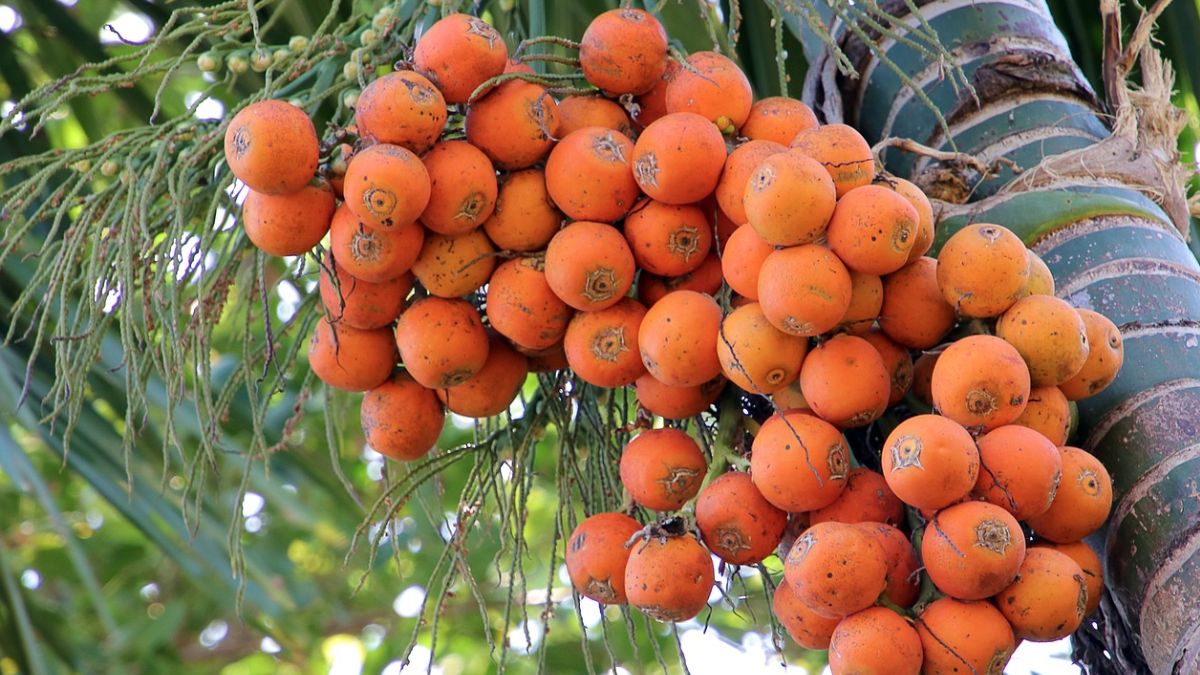The betel nut, derived from the Areca catechu palm, has been an integral part of cultural practices in various regions for centuries. Its association with social rituals, traditional ceremonies, and medicinal applications makes the betel nut a subject of fascination. In this article, we uncover the top 10 intriguing facts about the betel nut, shedding light on its cultural significance, health effects, and global perspectives.
Botanical Background – Areca Catechu Palm
The betel nut comes from the Areca catechu palm, a species native to Southeast Asia. Also known as the betel palm, it produces small, egg-shaped nuts within its fruit. These nuts are harvested, processed, and often combined with other ingredients to create the traditional betel quid.
Betel Chewing Tradition – A Cultural Ritual
Betel chewing is a longstanding cultural tradition in various parts of Asia and the Pacific. The betel quid typically consists of betel nut slices wrapped in betel leaves, often with the addition of slaked lime and other flavorings like tobacco or spices. This concoction is chewed for its stimulating effects and as a social and cultural practice.
Cultural Practices – Symbolism and Tradition
The act of betel chewing is deeply ingrained in the social fabric of many cultures. It is often associated with hospitality, social bonding, and traditional ceremonies. In some communities, betel nut offerings are made during important events, symbolizing goodwill and cultural identity.

Health Effects of Betel Nut – Stimulating Alkaloids
Betel nuts contain alkaloids, primarily arecoline, which accounts for their stimulant properties. Chewing betel nut is believed to induce a sense of alertness and mild euphoria. However, prolonged and excessive consumption is associated with adverse health effects, including increased risk of oral cancers, gum problems, and addiction.
Areca Nut Consumption – Global Perspectives
While the betel nut tradition is deeply rooted in Asia, its influence has spread globally due to migration and cultural exchange. Communities in diaspora often maintain the practice, contributing to the global consumption of areca nuts. This globalization has led to increased awareness of both the cultural significance and health risks associated with betel nut consumption.
Betel Quids – Diverse Combinations
Betel quids come in various formulations, reflecting the diversity of cultural practices. In addition to betel nut slices and leaves, ingredients like slaked lime, catechu (extract from the Areca catechu plant), and other flavorings are often included. The diverse combinations contribute to regional variations in the preparation and consumption of betel quids.
Health Risks – A Cautionary Note
Despite its cultural importance, betel nut consumption comes with health risks. The International Agency for Research on Cancer (IARC) classifies areca nut as a Group 1 human carcinogen, indicating a clear association with an increased risk of cancer. Chronic use is linked to oral submucous fibrosis, a pre-cancerous condition affecting the mouth.

Betel Nut Farming – Economic Significance
The cultivation of betel nuts holds economic significance in regions where the tradition is deeply rooted. Betel nut farming supports livelihoods and provides income for many communities. The cultivation process involves nurturing the Areca catechu palm, harvesting the nuts, and processing them for local consumption or trade.
Modern Challenges – Changing Perspectives
In recent years, changing lifestyles and increasing awareness of health risks have led to shifts in betel nut consumption patterns. Some communities are reevaluating their cultural practices in light of health concerns, leading to modified traditions or reduced usage. The challenge lies in preserving cultural heritage while addressing the associated health risks.
Research and Awareness – Navigating a Complex Tradition
Ongoing research continues to explore the multifaceted aspects of betel nut consumption, aiming to understand its cultural significance, health implications, and potential interventions. Increased awareness and education about the health risks associated with betel nut chewing are crucial in fostering informed choices within communities practicing this tradition.
This article provides a starting point for understanding the multifaceted nature of betel nut. Further research and responsible dialogue are crucial to navigate the complex challenges associated with this deeply ingrained cultural practice while safeguarding public health.










